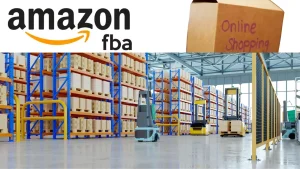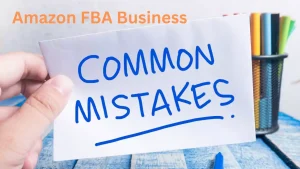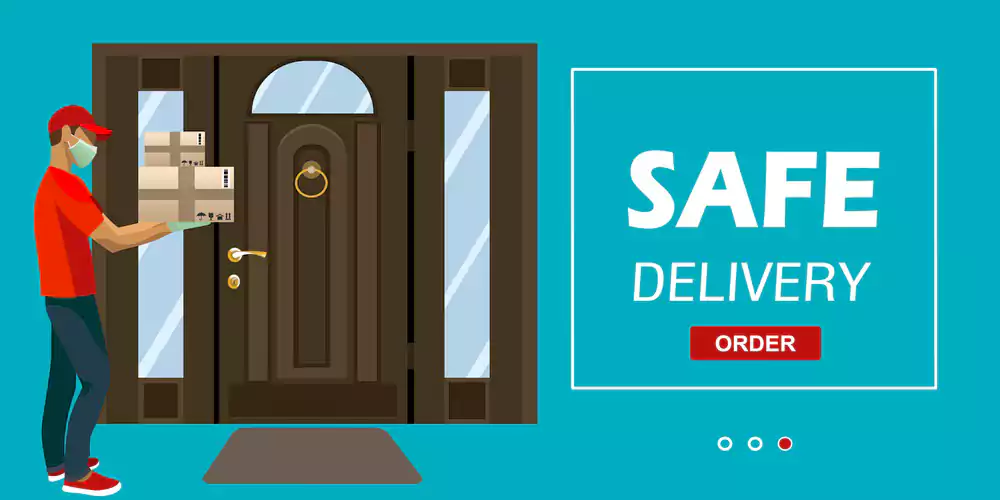If you’ve stumbled into the world of e-commerce, you’ve undoubtedly heard of Amazon FBA. This business model has attracted thousands of sellers from around the globe, promising lucrative opportunities with minimal hassle. But here’s the reality check—not everything about Amazon FBA is as simple as it seems. Data shows that around 80% of new Amazon FBA sellers fail and leave the platform.
In this article we are going to dive deep into what are the common mistakes, why this happens for a new seller, and what steps and preparation you can take to avoid the same mistake most of the businesses are facing? Let’s dig deep.
What is the Amazon FBA Business?
Amazon FBA, or fulfillment by Amazon in simple words, is a service or business model for the third party seller of Amazon marketplace. In this model Amazon handles storage, packaging, and shipping on behalf of sellers. Essentially, you send your inventory to Amazon’s warehouses, and they take care of the heavy lifting, including customer service and returns. This facilities and logistic management system allows sellers to focus on product sourcing and marketing their brand and product without worrying about logistics.
The concept is very helpful and sounds like the perfect solution, especially for new entry businesses and entrepreneurs looking to start an online business. However, understanding how FBA works is important because it’s not a one-size-fits-all setup. Sellers still need critical strategies around budgeting, inventory management, and product research to thrive.
Why is this Business Model so Popular?
Amazon FBA has democratized retail in ways that traditional business methods never could. It’s a magnet for sellers worldwide—including aspiring entrepreneurs from Bangladesh. Here’s why so many business owners are attracted to the Amazon FBA model:
- Access to Amazon’s Marketplace
With over 300 million active users on Amazon, your product instantly gets visibility where millions shop every day.
- Simplified Logistics
Amazon handles warehousing, packing, shipping, and returns, enabling sellers to focus on scaling their business.
- Customer Trust
Products fulfilled by Amazon get the prestigious Prime badge, which boosts customer trust and encourages purchases.
- Scalability
Once your product is selling successfully, scaling often becomes easier with automated systems already in place.
Despite these benefits, success on the platform is not guaranteed and requires focus, expertise, and clear strategies.
What Are the Risk Factors in Amazon FBA Business?
Amazon FBA isn’t a magic solution to building a successful business. New sellers frequently overlook and skip potential risks in awareness or without knowing it perfectly. Understanding these risks and amazon fba common mistakes ahead of time can help you avoid missteps:
- High Competition
Amazon’s broad marketplace is both a blessing and a curse. Competition with seasoned sellers often drives down profit margins.
- Costly Fees
FBA services come with fees for storage, fulfillment, and returns, which can add up, especially for heavy or slow-moving products.
- Inventory Management Challenges
Overstocking ties up cash in unsold inventory, while understocking can delay sales and impact rankings.
- Suspension Risks
Violating Amazon’s rules, even unknowingly, can result in account suspension or product listing bans. This is common among beginners who are unaware of Amazon’s strict policies.
- Dependence on a Single Platform
Sellers need to be diverse thinkers and not relying solely only on selling platforms on Amazon for revenue is risky. Changes in algorithms, policies, or sudden fees could endanger your entire business.
Why Do 80% of New Amazon FBA Sellers Fail?
The high failure rate among new Amazon FBA sellers is alarming but not surprising. Here’s why so many struggle to stay afloat:
- Lack of Research
Many sellers jump in without researching products or their target market. Selling a saturated product often leads to slim profits or losses.
- Underestimating Costs
FBA fees, advertising, and shipping costs can eat into profit margins. In my experience i’ve seen many sellers fail to calculate their actual costs of the business, so it leads them in loss and leaves them in financial trouble.
- Poor listing optimization:
Poor Amazon listing optimization is a major pitfall for many new Amazon FBA sellers. A product listing that lacks clear images, compelling copy, and relevant keywords fails to attract or convert shoppers.
- PPC management:
PPC strategy can quickly drain your budget without generating meaningful sales. Many sellers launch ads without proper keyword research or a bidding plan, leading to low ROI and wasted spend.
- Poor Product Sourcing
Selecting poor-quality products or dealing with unreliable suppliers can harm your reputation and generate customer complaints.
- No Marketing Strategy
Simply listing a product isn’t enough. You need effective marketing strategies to build visibility and attract traffic.
- Giving Up Too Soon
Building a thriving FBA business requires time, patience, and continuous learning. Many sellers abandon the platform after a few setbacks.
Key Business Elements to Keep in Mind from the Start
From the above, one thing we are sure about is getting it right from the very beginning can make all the difference in your Amazon FBA success story. Here’s what to keep in mind:
- Product Selection
Focus on high-demand products with low competition. Use tools like Jungle Scout or Helium 10 to research keywords and products.
- Budget Planning
Allocate funds wisely for inventory, advertising, and unexpected expenses like storage fees during peak seasons.
- Understand Amazon’s Rules
Familiarize yourself with Amazon’s guidelines on listing products, customer engagement, and intellectual property.
- High-Quality Branding
Build a recognizable brand with attractive packaging, professional images, and compelling copy.
- Customer Service as a Priority
Even though Amazon handles customer service, actively monitors reviews and provides timely resolutions to complaints.
You can watch the YouTube Bangla video tutorials to learn more and avoid mistakes
Suggestions for a Newly Enrolled Amazon FBA Seller
From where ever you are staying and if you have plan to start your Amazon FBA business can be overwhelming, but these tips i’m giving here will give you a strong foundation:
- Start Small
Like the saying, test the waters with a small. Initially start with the small inventory and scale gradually to minimize risks of losing.
- Invest in Learning
Empower yourself with online courses, attend webinars, or watch free tutorials like the Bangla guide linked below.
- Optimize Your Listings
Create attractive keywords enriched product titles, detailed descriptions, and use high-quality images to draw attention.
- Track Performance Metrics
Consistently monitor your sales data, profit margins, and ad campaigns to identify areas that need improvement.
- Be Patient and Persistent
Building a sustainable business in any platform takes time and persistence. No exception with Amazon FBA business and it takes time to grow. Persistence and adaptation are very important for overcoming challenges.
For a more comprehensive guide, check out the detailed Bangla tutorial below and get expert insights tailored for entrepreneurs in Bangladesh.
Final Verdict
The Amazon FBA business model can be a game-changing venture, but it’s not without its challenges. By understanding its nuances, conducting thorough research, and following expert advice, you can set your FBA business up for success.
Are you ready to step into the world of e-commerce and build a profitable FBA business? Start small, stay informed, and stay committed. The rewards are worth the effort.






